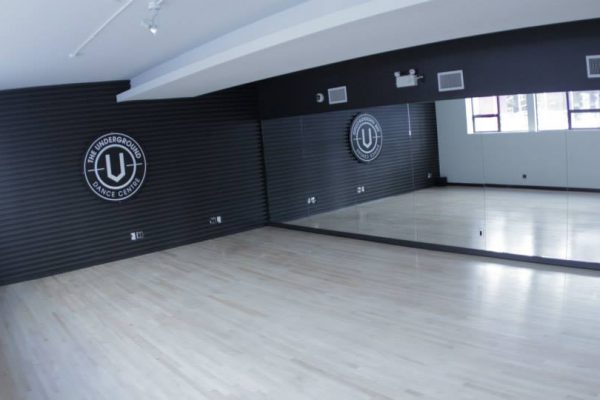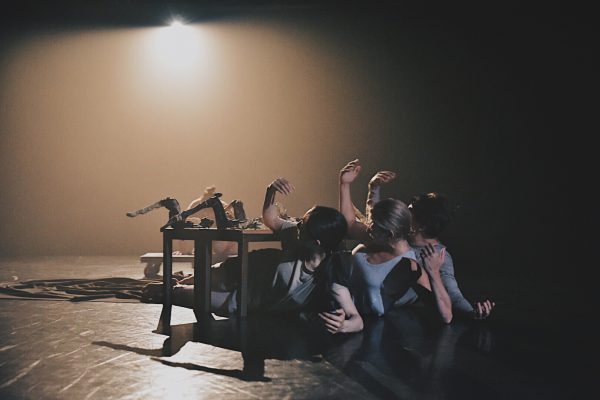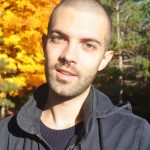Milestone anniversaries are being celebrated all around Vancouver’s cultural community. The 1970s and 1980s was a generative time for creative institution building in this city and this has led to a tone of collective reflection and re-evaluation amongst Vancouver’s not-for-profit arts sector over the past few years. This is where we find the Dancing on the Edge Festival (DOTE). Established in 1988, the festival marked its twenty-fifth year with a compelling and challenging line-up of contemporary dance. Featuring local dance heroes and wunderkinds past and present, it became clear while watching the festival that the tone of Dancing on the Edge this year is reflective, asking some hard questions: how can a festival be relevant now? What is at stake in contemporary dance and movement? What constitutes the ‘edge’ today?
One of the more striking elements of the festival was the abundance of public programming. In Vancouver, where public performance can be complicated to produce due to municipal red tape, the festival boasted an incredible assortment of free events, primarily situated in East Vancouver. This included free daily performances at the Gastown steam clock by Co.ERASGA Dance. The incredible DUSK DANCES featuring a range of choreographers staging works in CRAB Park was a fairly magical way to spend a summer evening. These so-called “Site Works” attracted both specific and incidental audiences with ease, the works being both engaging and challenging and mostly avoiding the pitfalls of pandering to some imagined ‘public’.
The rest of the festival was divided into evening-length works and shorter mixed programs, which featured up to three different pieces per show. By taking in such a range of works over two weeks, one can take the current temperature of Vancouver contemporary dance; synchronicities emerge, trends arise. The most striking tendency that I observed (other than dancing in skinny jeans) was dancers using their voices. In nearly every program I saw, somebody spoke, sang, recited or read.
Wen Wei’s Made in China started off with a charming verbal introduction to collaborators Gao Yanjinzi (artistic director of the Beijing Modern Dance Company), classical musician Qiu Xia He and artist Sammy Chien, singing a Chinese pop song, joking and talking about their backgrounds. Most instances of the spoken word were less conversational, such as Jennifer Mascall’s Nijinksy Gibber Jazz Club, which included the crystalline performance of a monologue that tied a seemingly disparate set of props and movement cohesively together. Choreographers have something to say, it seems, even if nobody is responding. With that in mind I imagine, the festival hosted a talkback series after each performance, giving the audience the opportunity to engage in a public forum with performers and choreographers. The talkbacks were under-attended, perhaps due to people needing to rush to catch the next performance or simply wanting a break between shows. Still, I would love to see this program expanded with more stand-alone discursive events related to DOTE content — a symposium, a speakers’ series, something to facilitate discourse around contemporary dance in Vancouver. The appetite is already there with the creators and it will come with audiences.
One remarkable monologic offering was James Gnam/plastic orchid factory’s Remember When, in which Gnam deftly prodded the discourse of dance by announcing that dancers should not write their own artistic statements, they should get anyone else, anyone at all, to step in and write them instead. The sentiment (one with which I mostly agree) was not presented as some flip criticism, but was just one element in a brilliant meditation on ephemerality, memory and the body. Remember When insightfully unpacks the layers of mediation– technological and otherwise–in dance, by repeatedly performing bits of past repertoire. Gnam demonstrates that the body does its own documentation. Remember When employs a utilitarian looping video feed to haunting effect, projecting the choreographic fragments back to us in real time from a range of camera angles. In an age where it seems dancers are constantly accompanied by projected versions of themselves, it was refreshing to see technology incorporated into choreography out of conceptual necessity rather than novelty. James Gnam/plastic orchid factory’s work points up how the vocabularies of contemporary dance are broadly relevant and deeply meaningful, beyond technical virtuosity or aestheticized gesture.
The Righteous Floater by relatively emerging choreographers and performers brothers Arash and Aryo Khakpour was a surprising and moving work about extreme violence, domesticity and dislocation. Based around the Bible story of Cain and Abel, this piece addresses fratricide in a way that is in turns playful and deadpan to devastating emotional effect. I kept thinking during the performance, “Why is everyone laughing? This is an emergency”! The brothers drag each other’s dead weight across the floor, wearing plaid pajama bottoms, in an unsettling homage to Hannah Arendt’s assertion about the banality of evil. The work reminds us what is at stake today, when bodies and space are tacitly politicized and contested perhaps more than ever, that dance has the potential to develop important forms of being, knowing and resistance through the body.
The final work that I saw at the festival was Ame Henderson and Matija Ferlin/ Public Recordings’ The Most Together We’ve Ever Been at the Dance Centre. It is a small and hard, glittery gem of a piece, a pop-art concoction of gestures that reminded me of the title of artist Judy Radul’s book, People Things Enter Exit–the performance is structured discretely around these four elements. The work is flanked by an impossibly seductive array of props, which go untouched, and a fire door at the back of the stage that allows the performers to spend almost as much time offstage as on. When I think through The Most Together We’ve Ever Been it becomes clear to me that the ‘edge’ probably doesn’t exist anymore, it is instead perhaps a series of thresholds or boundaries. Public Recordings seamlessly traversed disciplinary boundaries, creating a work that is at once performance art, standup comedy, dance and visual art.
I wish I had also seen this kind of diversity in the audiences at DOTE. While it was well attended, I didn’t see too many people outside of Vancouver’s dance scene watching shows. The festival is undeniably important to Vancouver’s cultural ecology and I implore cultural producers and audiences of every ilk to take it in, with the hope that this type of critical and compelling performance work will have a platform for at least another twenty-five years.
Tagged: Contemporary, BC





